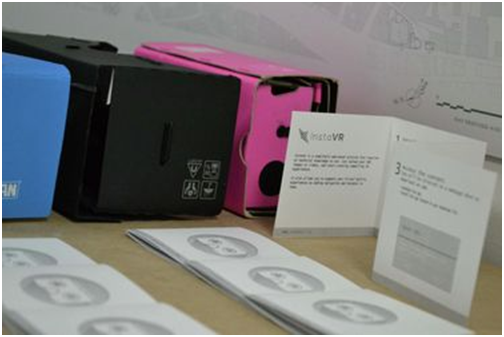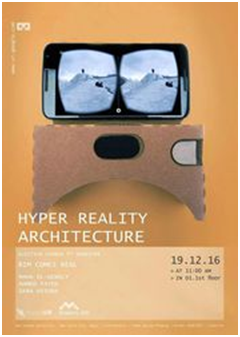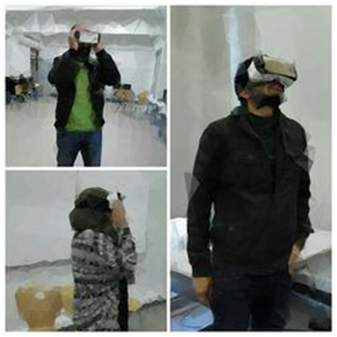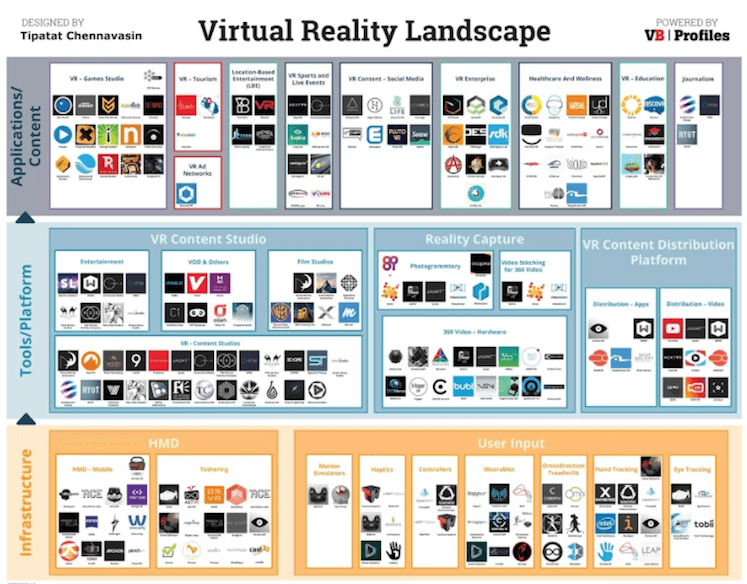Higher education has always been fertile ground for the creation of new, boundary-pushing technology. While VR software and hardware innovation have been, to date, largely the domain of startups and large tech companies, it’s colleges and universities that are using the technology in some of the most interesting ways.
Professors and students alike are exploring the various disciplines where immersive imagery and audio can be impactful, and the adoption rate is only accelerating.
See also: VR standards – too early or long overdue?
University settings encourage big thinking — What if a search engine could utilize a more perfect algorithm to give more relevant results? What if a social network could redefine how humans interact? What if we could map out the human genetic code? Virtual Reality and Augmented Reality haven’t quite approached these levels of disruption.
But with VR expected to be a $75 billion industry by 2021, according to Greenlight Insights, there’s no doubt that virtual reality will have a big impact. So it’s not surprising that professors and students are delving into all facets of the technology to understand how it will impact us, and hopefully make our lives better.
Almost no university-level subject matter is immune to VR’s impact. Take Architecture and Urban Design Program at German University in Cairo, for example. They used our InstaVR platform for creating immersive tours of historical buildings in a project called “Historical Cairo Goes VR.” Some of the oldest and most interesting buildings in Cairo were made virtually walkable from thousands of miles away using cutting edge technology.
The students overlaid the 360 tours with image and video hotspots, to provide relevant contextual information. The result was an incredibly immersive and memorable VR and classroom experience, all of which was made possible at a reasonable price point give the preponderance of 360 cameras and low-cost VR headsets on the market.

Studying the impact of VR on society
Besides using VR for teaching or learning, a number of academics are studying the impact VR will have on society as a whole. Earlier this year, the UC Institute for Prediction Technology used our InstaVR app creation tool to create smoking cessation VR applications. Rather than just gather user feedback post-VR experience, they were able to gather actual information on where people were focusing their attention while using a Google Cardboard headset. Overlaid on the VR experience, a heat map shows a visual representation of time spent looking at different areas of the 360 landscape. Since memory is notoriously subject to unconscious biases, VR heat maps can provide academics with actual actionable information.
In this particular case, researchers could see among the VR smoking cessation experiences, where were users focusing most of their attention, suggesting an area successful at capturing focus. And overall, the study could inform whether VR actually helps change behavior in the real world.
Other VR experiences built by InstaVR college/university clients in the past 12 months have included: an app to determine the efficacy of VR for eliciting empathy, an app for acclimating therapists for working with patients, apps to take Australian college students on virtual field trips, and embeddable 360 images to augment news articles by student journalists.
The core throughline of VR in higher education is utilizing the technology to expand and improve what is already taught, as well as to make things more participatory. Traditional psychology experiments give test subjects hypothetical scenarios, and ask — “What would you do if this happened to you?” In the case of determining empathy, the mind has to take a big leap to put itself in other people’s shoes. Virtual reality allows users to bridge that gap, and truly feel what the proposed scenario would be like, as least as close to reality as possible. Thus, you can ask them questions within the experience (using Hotspots/Navigation as response vehicles) or look at a heat map afterward, giving you more accurate data than you would in traditional experiments.
Making things more participatory
In terms of VR making things more participatory, that’s a win-win for both college students and professors. While lecturing can certainly still be valuable, the multimedia associated with say a virtual field trip to Roman ruins (an actual VR app made on our platform) is more memorable and can lead to more engagement. VR allows for a true “Choose Your Own Adventure”, with students empowered to explore and delve deeper with multimedia hotspots into areas they want to explore further. Certainly, with the students from German University in Cairo, the resulting experiences they built themselves were more memorable than say putting together a PowerPoint presentation.
VR allows for a true “Choose Your Own Adventure”, with students empowered to explore and delve deeper with multimedia hotspots into areas they want to explore further. Certainly, with the students from German University in Cairo, the resulting experiences they built themselves were more memorable than say putting together a PowerPoint presentation.
Ultimately, adoption at the higher ed level largely depends on tech-forward professors, or students taking greater initiative. 360 cameras have fallen in price as they’ve become more ubiquitous, and web-based authoring software like InstaVR has made distributing apps simple. So don’t be surprised if you look into a classroom next time you’re at your alma mater, and you see the whole class dawning Gear VR or Google Daydream headsets.
The author is Head of Sales & Marketing at InstaVR. Based in San Francisco, InstaVR is a virtual reality focused technology company, providing tools and services to enable professionals to author and publish interactive VR experiences. InstaVR is completely web-based and requires no specialized engineering knowledge. Since launching in early 2016, over 10,000 companies have created thousands of immersive 360-degree apps for iOS, Android, Web, Gear VR, HTC Vive, Oculus Rift, and Google Daydream. For more information and to access the InstaVR platform, visit https://www.instavr.co.
This article is part of our Virtual Reality series. You can download a high-resolution version of the landscape featuring 431 companies here.












